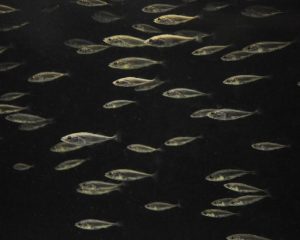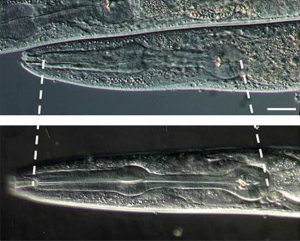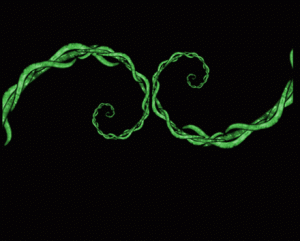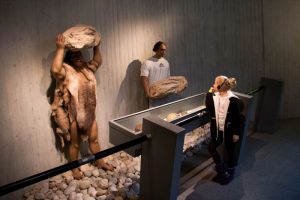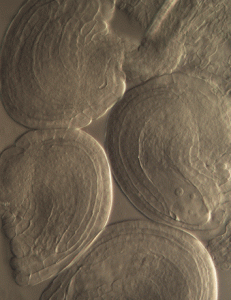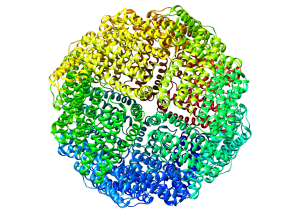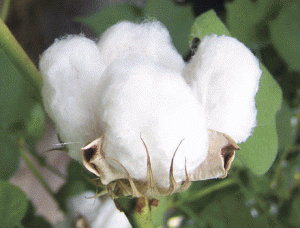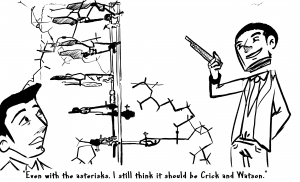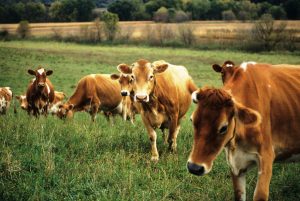Enter your address to receive notifications about new posts to your email.
Science & Publishing
-
Science & Publishing
Fish with robot friends: linking genes to behavior
The relative contributions of nature and nurture to behavior are a perennial source of dispute. That there is a genetic component is clear, but frustratingly, only a handful of specific genes are known to directly influence behavior in vertebrates. In the June issue of GENETICS, Greenwood et al. describe how they pinned down one of…
-
Science & Publishing
Stretchy cells underlie organ development
Animals’ complex body plans come at a cost: their development is elaborate and must be delicately controlled. One critical aspect of development is size and shape control—every organ needs to fit in its place. The process requires the orchestration of a dizzying number of pathways, and understanding even a single component is far from trivial.…
-
Science & Publishing
Jamborees of GENETICS Authors
By guest authors Robert K. Herman, Gabriela Huelgas-Morales, and David Greenstein This summer, GSA is throwing a genetics shindig–The Allied Genetics Conference (TAGC)–to bring geneticists from multiple disciplines together to promote interaction and cross-fertilization among fields. In a way, this meeting extends a current trend: GENETICS authors have been aggregating for some time. Those of us…
-
Science & Publishing
Inbred Neanderthals left humans a genetic burden
The Neanderthal genome included harmful mutations that made the hominids around 40% less reproductively fit than modern humans, according to estimates published in the latest issue of GENETICS. Non-African humans inherited some of this genetic burden when they interbred with Neanderthals, though much of it has been lost over time. The results suggest that these harmful…
-
Science & Publishing
June GENETICS Highlights
Check out the June issue of GENETICS by looking at the highlights or the full table of contents! This Month’s Centennial Articles Joshua Lederberg on bacterial recombination, pp. 613–614 Mark Johnston GENETICS Editor-in-Chief Mark Johnston introduces Joshua Lederberg’s GENETICS Classic Gene recombination and linked segregations in Escherichia coli, which describes the first genetic analysis of bacteria. Lederberg’s discovery that…
-
Science & Publishing
How worms that pump iron get fat
Despite its reputation as an innocent essential mineral, excessive iron intake can be poisonous, and maintaining the proper amount within our cells requires a molecular balancing act among several biochemical pathways. Even at levels that are not overtly toxic, iron overload in humans has been associated with an increased risk of obesity and related conditions,…
-
Science & Publishing
New in G3: Cotton, Candida, and Chlamydomonas
Check out the June issue of G3! Investigations Sdt97: A Point Mutation in the 5′ Untranslated Region Confers Semidwarfism in Rice Jiping Tong, Zhengshu Han, Aonan Han, Xuejun Liu, Shiyong Zhang, Binying Fu, Jun Hu, Jingping Su, Shaoqing Li, Shengjun Wang, and Yingguo Zhu G3 June 2016 6:1491-1502; Early Online April 29, 2016 doi:10.1534/g3.116.028720 Abstract…
-
Science & Publishing
Credit where it isn’t due
We biologists can be a credit-hungry lot. Getting a paper into press that shows we were first to make a discovery best satisfies our appetite for affirmation. But has the trend to slice each piece of credit ever finer gone too far? (While perhaps easy for a senior member of the field like me to…
-
Science & Publishing
Runaway amplification: 800 copies and counting
Massive amplification of genes is a desperate strategy taken by stressed populations adapting to an environment that has become inhospitable. Such amplifications can give an underperforming gene a much-needed boost in productivity simply by increasing its copy number. But counterintuitively, research reported in the May issue of G3 implies these amplifications may arise even in…
-
Science & Publishing
Milking the Data: How genomic selection herded in a breeding boom
Sometimes, great advances in science come from combining the old with the new. Genomic selection is one such case; in 2001, Meuwissen, Hayes, and Goddard surveyed the changing landscape of genetics, had the foresight to work on a then-theoretical problem, and laid the foundation for a boom in biotechnology-assisted breeding that continues to this day.…
-
Science & Publishing
Action at a distance
While the textbook enhancer is often depicted just upstream of a gene, many enhancers influence transcription from afar—some can activate genes a million base pairs away. Enhancers can even activate genes on a completely separate chromosome (i.e., in trans), a process called transvection. It’s not known how common transvection is, but an article in the…


